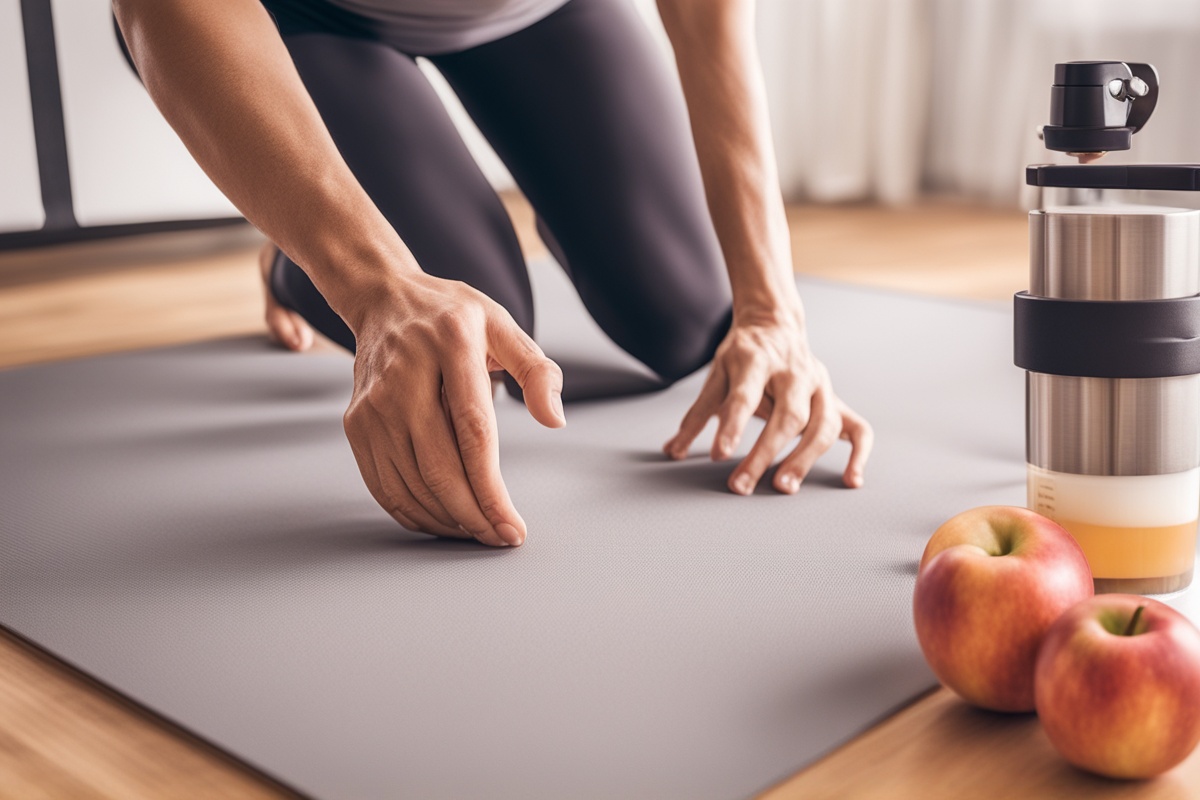Hey there, health enthusiasts! If you’ve been exploring ways to optimize your wellness journey, you’ve likely stumbled upon the dynamic duo of fasting and exercise. Combining these two practices—often referred to as fasting exercise—can supercharge your fitness goals, improve metabolic health, and even enhance mental clarity. But how do you balance fasting with physical activity without feeling drained? Is it safe? In this post, we’ll dive deep into the science, benefits, and practical tips for integrating fasting and workouts into your routine. Whether you’re a seasoned faster or a newbie to intermittent fasting, this guide will help you make the most of this powerful combination.
What Is Fasting Exercise, and Why Does It Matter?
Let’s start with the basics. Fasting exercise refers to performing physical activity while in a fasted state—meaning you haven’t eaten for a certain period, typically 12–16 hours or more. This could align with popular fasting methods like intermittent fasting (IF), where you cycle between eating and fasting windows, or even longer fasts under medical supervision. The idea behind combining fasting with exercise is to tap into your body’s stored energy (like fat) for fuel, as your glycogen reserves are low during a fast. Research suggests that this approach may enhance fat-burning, improve insulin sensitivity, and boost endurance. But it’s not just about weight loss—fasting workouts can also promote cellular repair through a process called autophagy, where your body cleans out damaged cells. Sounds intriguing, right?
The Science Behind Fasting and Exercise: How It Works
Let’s geek out for a moment on the physiology of fasting exercise benefits. When you fast, your body shifts from using glucose (from recent meals) to burning stored glycogen and, eventually, fat for energy. Exercising in this state can accelerate the switch to fat-burning mode, as your body seeks alternative fuel sources. Studies, such as those published in the Journal of Physiology, have shown that fasted cardio—think jogging or cycling on an empty stomach—can increase fat oxidation by up to 20% compared to exercising after eating. Additionally, fasting triggers the release of human growth hormone (HGH), which supports muscle repair and fat loss. Meanwhile, exercise amplifies these effects by boosting metabolism and improving cardiovascular health. It’s a win-win if done correctly!
Benefits of Combining Fasting with Workouts
The perks of fasting and fitness go beyond just shedding a few pounds. Here are some standout advantages that might convince you to give fasted workouts a try:
- Enhanced Fat Loss: Training in a fasted state may help your body tap into fat stores more efficiently, supporting weight management goals.
- Improved Metabolic Flexibility: Alternating between fed and fasted states teaches your body to switch fuel sources, which can stabilize blood sugar levels.
- Boosted Mental Focus: Fasting can increase ketone production, a brain fuel that sharpens cognition during exercise.
- Time Efficiency: Many people find morning fasted workouts convenient, as they align with overnight fasting and save time on pre-workout meals.
Potential Risks and How to Avoid Them
While the benefits of fasting exercise routines are impressive, it’s not without challenges. Exercising while fasting can lead to dizziness, fatigue, or low blood sugar if you’re not prepared. Beginners, in particular, might feel sluggish as their bodies adapt to using fat for fuel. Overdoing it can also spike cortisol (stress hormone) levels, potentially leading to muscle loss instead of gain. The key is to listen to your body and start slow. If you have underlying health conditions like diabetes or are pregnant, consult a healthcare provider before combining fasting with physical activity. Hydration is also critical—fasting doesn’t mean skipping water, so keep sipping to avoid dehydration during workouts.
Practical Tips for Safe and Effective Fasted Workouts
Ready to dive into fasting and training? Awesome! Let’s make sure you do it safely and sustainably. Here are some actionable tips to help you build a solid fasting exercise plan without burning out:
- Start with Low-Intensity Exercise: If you’re new to fasted workouts, opt for walking, yoga, or light cycling to ease your body into the process.
- Time Your Workouts: Schedule exercise near the end of your fasting window (like morning sessions after an overnight fast) to maximize fat-burning potential.
- Stay Hydrated: Drink plenty of water before, during, and after your workout to prevent dehydration, especially since fasting can reduce fluid intake from food.
- Break Your Fast Wisely: Refuel post-workout with a balanced meal of protein, healthy fats, and carbs to support muscle recovery and replenish energy.
- Monitor Energy Levels: If you feel weak or lightheaded, stop immediately and consider shortening your fast or adjusting workout intensity.
Who Should Try Fasting Exercise, and Who Should Skip It?
Not everyone is a candidate for fasted fitness. If you’re generally healthy, active, and curious about boosting your metabolism, fasting exercise might be a great fit. It’s especially popular among those practicing intermittent fasting for weight loss or endurance athletes looking to improve performance. However, if you struggle with low energy, have a history of eating disorders, or are on certain medications, this approach might not be ideal. Always prioritize your well-being over trends—fasting and workouts should feel empowering, not punishing. When in doubt, a quick chat with a doctor or nutritionist can provide clarity on whether this combo suits your lifestyle.
In wrapping up, combining fasting and exercise can be a game-changer for your health and fitness journey when done thoughtfully. The synergy of fasting exercise offers unique benefits like enhanced fat loss, better metabolic health, and even sharper focus—but it’s not a one-size-fits-all solution. By starting slow, staying hydrated, and tuning into your body’s signals, you can safely explore fasted workouts and see what works for you. Remember, the goal isn’t perfection; it’s progress. So, lace up those sneakers, set a fasting window, and take the first step toward a stronger, healthier you. Have you tried fasting with exercise before? Drop your experiences or questions below—I’d love to hear from you!






